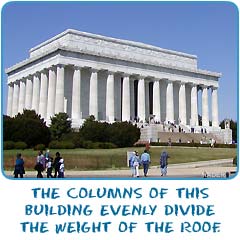
Division Overview
This is where math starts to get a little tricky. Division is about breaking something into many pieces. You have probably heard the word "divide" all over the place. You divide your candy with your friends. You divide pieces of a turkey at dinner. You start with one amount and wind up with smaller pieces.As far as words are concerned, we will use three terms in this section. In each division problem, you will have one number divided by another. The number you are dividing is called the dividend. The number you are "dividing by" is the divisor. The answers to your division problems are called quotients. Six divided by two gives you a quotient of three.
Example:
8 ÷ 4 = 2
8 is the dividend.
4 is the divisor.
2 is the quotient.
The division symbol (÷) in this problem is called an obelus.
You may also see it written in this format...
|
2 4 ) 8 |
or this one...
8 / 4 = 2
Just Like Fractions
This section will move right into the fractions area, because fractions are basically a different way of writing a division problem. When you move into more advanced math, you may even write out division problems that look like fractions.You will learn that the fraction 1/4 has the same value as one (1) divided by four (4). As you work with decimals, you will quickly discover that 1 divided by 4 is 0.25 and the value is known as one quarter. Division is even important to percentages. The decimal 0.25 is the same as saying 25 percent. One-fourth of a pie is 25% of the total pie. All of the values are identical, but you use them in different ways.
That example shows you that there are many ways to say the same thing in math. It's like a language. Many different terms or words describe the same value, but they all mean the same thing. Blue, azul, bleu, blu, and blauw are all different words that describe the same color blue. You can move from one language to another with some translation. You can move from fractions to decimals or percentages with a little conversion.
Dividing Different Types of Numbers
We have a whole section on numbers for you to learn more. In the division section, we'll look at whole numbers that include the numbers 0 and up. We'll also look at integers and see how you can divide negative and positive numbers.Useful Reference Materials
Wikipedia:https://en.wikipedia.org/wiki/Arithmetic
Encyclopædia Britannica:
http://www.britannica.com/topic/arithmetic
Encyclopedia.com:
http://www.encyclopedia.com/topic/arithmetic.aspx





